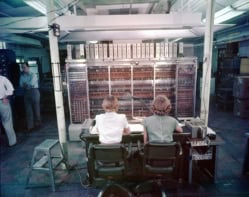
By Michael Banks
Blink and it’s gone.
No, it’s not the latest in the search for the Higgs boson at the Large Hadron Collider near Geneva, but instead a slight difference in the mass between neutrinos and their antimatter counterparts, antineutrinos.
Neutrinos come in three “flavours” – electron, muon and tau – that change or “oscillate” from one to another as they travel though space.
It is generally thought that neutrinos and antineutrinos should have the same mass. Last year, however, results from the MINOS experiment at Fermilab, near Chicago, showed a 40% difference between muon neutrinos and muon antineutrinos (converting into tau neutrinos and tau antineutrinos, respectively) as they travelled from the accelerator to the MINOS detector (shown above) some 735 km away in the Soudan mine, Minnesota.
The results were presented with a “confidence level” of around 90–95%, which in statistical terms is approximately “two sigma” (usually a “discovery” requires five sigma).
Although the two sigma significance was small, the result was backed up three days later by a three sigma effect at another detector in the Soudan Mine – MiniBooNe. They saw a difference when muon neutrinos oscillate into electron neutrinos compared with the related process for muon antineutrinos.
Physicists noted that if the result turned out to be true it would not come as a surprise, but as an “overwhelming shock”.
But now it seems as though those fears have at least been partially allayed. After gathering twice as much data, researchers at MINOS announced yesterday at the Lepton Photon 2011 meeting in Mumbai, India, that they found the difference had dropped from 40% to 16%.
So it seems that there is still a disparity, but more data will be needed before we can be sure whether there is any mass difference between neutrinos and antineutrinos.



